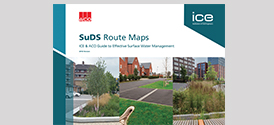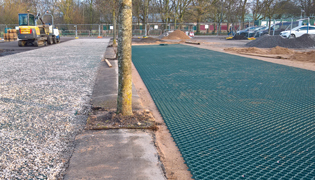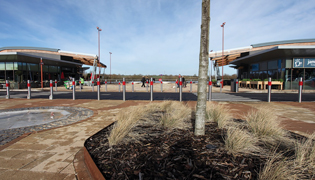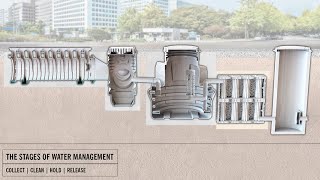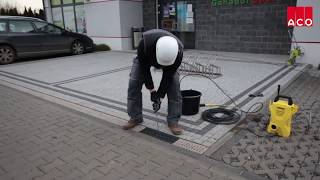
Professional Development for Contractors
Helping create knowledge champions
In today’s ever changing construction industry, it has never been more important to ensure you are up to date with current industry trends and new innovations.
ACO recognises that as a contractor in the construction sector this can be a daunting task and has developed a series of Professional Development courses that can be accessed in number of ways, ensuring you can undertake professional development when and where you need it.
Dependant on your area of contracting expertise, your professional body or employer may require you to undertake professional development, this is usually between 20-30 hours CPD per year and could, for example, be split between personal technical knowledge and skills, job role technical knowledge and skills, and personal soft skills.
Levels of CPD
ACO have identified 3 levels of CPD in line with leading Construction Institution guidance. These levels assist you and ACO to select the educational program required for your professional development. For a full description please contact us.
Level 1 – Basic knowledge and understanding
Level 2 – Application of knowledge to a subject
Level 3 – Reasoned advice, depth and synthesis of technical knowledge and its implementation
Urban Surface Design
Level 1
Description
The presentation explores the history of surface water management and how it has evolved into a requirement for construction projects, leading on to look at the future and how SuDS is becoming a statutory requirement.
We look at new standards that will govern Surface Water Management Systems and how these will affect architectural practices and the implementation of SuDS.
The presentation moves on to demonstrate how innovative drainage design can be used to integrate and enhance the aesthetic of a project and still be practical and functional. Looking at external drainage designs and how these areas can tie into SuDS including Green/ Blue roof solutions, planters and tree pits.
Case studies are used throughout the presentation, demonstrating how ACO contributes directly to design outcomes through expert knowledge.
Learning outcomes
• Learn about the origins and evolution of surface water management
• Understand legislation and guidance for local planning authority approval
• The basic principles of SuDS and drainage design
• Where to use channels to break up and enhance different surface finishes
• How drainage can be hidden from site to create seamless hardscaped areas
• To connect with green SuDS and enhance the natural environment creating green space
Effective Surface Water Management
Level 1
Description
To help architects, designers and contractors meet legal requirements that now tightly control the way surface water is managed, ACO has created its unique ‘Surface Water Management Cycle’ – Collect, Clean, Hold, Release – the four core processes now required for the complete and sustainable management of surface water drainage with a balance of proprietary products and SuDS features.
We focus on why we need surface water drainage; how to select an appropriate system from the perspective of design, materials, environmental impact, loading, aesthetics and the legislation used to ensure that the manufactured product is of the highest standard.
Looking at where it goes following its collection from the surface i.e. the natural environment or a combined sewer. How we treat this collected rainwater using oil, heavy metal separators and what level of treatment is required based on the SuDS mitigation Indices set out in The SuDS Manual (C753).
Volume and rate of runoff are a consequence of a changing climate. How we manage this volume using soft SuDS and underground storage in an economic way, creates resilience systems. Though, making sure the system is future proof in terms of inspection and maintenance is desirable and evaluated. The rate we release storm water into the environment and how flow controllers can assist in alleviating scour, wash out, bank erosion and cut down on excess storage on the site is the final subject.
Learning outcomes
• Understand the basic requirement for surface water management
• Learn how ACO approaches each element of Collect, Clean, Hold & Release
• Where to get access to applicable standards and guidance
• Understand load classes as per BS EN 1433 and the certification process
• The application of surface water management products in a variety of scenarios
• Understand the principals of separation devices
• Learn the basics of The SuDS Manuals (C753) Mitigation Indices and Connecting to SuDS features
• How to specify underground attenuation for loading and maintenance
• Understand how Controlling the flow rate can lower the need for attenuation
Practical and Sustainable Surface Water Management
Level 3
Description
This presentation focuses on the future of surface water management, where climate change, urbanisation, population growth and water scarcity are the key drivers for change and underline the importance of SuDS.
We look at the desirable attributes of SuDS in the form of infiltration, evaporation and evapotranspiration and, why maintenance is a crucial factor to consider when implementing a SuDS feature.
For any design, there are three ideal solution attributes; economic construction, the concept of ‘resilience’ in design and sustainability. Delivering these attributes is a challenge that all designers face and will be vital to maintaining a competitive advantage as the industry evolves.
We consider managing runoff, using both soft and hard solutions to deliver an optimised scheme, taking advantage of site topography and features of the local environment.
As members and sponsors of the new CIRIA Suds manual (C753), we explore how to instigate design features that enable compliance with Government guidance while delivering value-added benefits to the client and community.
Learning outcomes
• Learn the history, evolution and drivers of SuDS
• Understand the fundamental principles of a SuDS design
• Where to access legislation and guidance in the field of SuDS design
• Understand the balance between economics, resilience and sustainability
• Learn about government standards for water quantity
• How The SuDS Manual (C753) designs for rate and volume control
• Learn about rate management and interception losses using surface storage and green SuDS
• Understand pollution levels and the important of molecule sizing
• How to design treatment trains using The SuDS Manual Mitigation Indices
Value Engineering
Level 2
Description
In an age of construction, where margins are shrinking, uncertainty is increasing and a dispute is enough to send a company into liquidation, finding certainty and greater profitability from a project is of the utmost importance.
This presentation will look at the Surface Water Management System and how ACO conduct Value Engineering, or what we call the ‘Recognition of Opportunities’ within a scheme. Exploring a series of case studies where we have worked with various consultants and contractors to find value within a project, this presentation outlines the importance of early engagement with clients to find the most economical solution for any given scheme.
For this presentation, ACO teamed up with cost consultant Gleeds to provide the cost before and after Value Engineering was carried out.
Learning outcomes
• Find out how early engagement and collaboration can deliver cost and time efficiencies
• Learn how to use channels to rationalise a site drainage layout
• Why considering site topography can save on proprietary products, materials, excavation and time on site
• Using structural calculations can rationalise geocellular storage and lower excavation, offsite transport and accelerate the site programme
• Using surface storage in line with The SuDS Manual guidance can eliminate underground storage
Quad Channel Design
Level 1
Description
The ACO Quad Hydraulic design software is free, online and cloud based, enabling the quick and easier design and optimisation of channel drainage systems including the design of surface storage and the prediction of maintenance schedules. Other modules include the design of Geocellular storage volumes taking into consideration roof drainage and other contributing areas.
We look at different Wallingford storm profiles (FSR) and the free input capability for FEH rainfall data. Moving on to the effect of designing the channel with insufficient capacity and how to design surface storage in line with the SuDS manual for exceedance events. Looking at complex geometry, the use of additional catchment areas and point inflows along the channel run to generate a comprehensive design.
For maintenance a peer reviewed paper on The Source, impact and management of car park runoff pollution carried out by ACO in combination with Middlesex and Cranfield University provides the calculations to establish the length of time required between maintenance periods.
Finally, we finish by calculating the site storage requirements where the software automatically adds up all the contributing areas from the channel design and additional onsite areas can be added.
Learning outcomes
• Learn how to use the ACO Quad hydraulic design software
• How to evaluate a design using a variety of different storm profiles
• Design surface ponding in line with SuDS for extreme events
• Model complex catchment areas to suit site layout
• Learn how to model complex channel layouts to create a network
• Design for maintenance of channel drainage systems
• Learn how to calculate attenuation volumes
• Create an output that can be used for approval
• Calculate the required excavation and concrete required for an installation
StormBrixx
Level 1
Description
Attenuation is a requirement for most construction sites across the UK. This is essential to deal with Volume Control set out in DEFRA’s Sustainable Drainage Systems - Non-statutory technical standards for Sustainable Drainage Systems and the Quantity Element of The SuDS Manual. Geocellular Storage Systems are a large part of this Attenuation capacity where space is often a premium.
The presentation takes you through all the features and capabilities of ACO StormBrixx, the ACO Geocellular storm water management system and its application across all construction environments, as part of an integrated SuDS scheme. Looking at different testing methodologies and certification to enable the designer and installer to make an informed decision over the selection of a suitable Geocellular Storage structure.
Learning outcomes
• Why ACO’s principal led development process created high spec products
• Where to get access to applicable standards and guidance
• Learn both current and future testing standards and design guidance
• Where to get access to applicable standards and guidance
• Industry certification and information required by designers
• StormBrixx SD & HD product specifications and functions
• How to design for access and maintenance for the adoption of systems
• The important of logistics, storage. Transport and environmental savings
• Case studies to learn from best practice and varying interesting installations

ACO recognises that knowledge transfer is fundamental in keeping up-to-date with these latest advancements in surface water management and has unique professional development and training offers for industry professionals. These can be accessed in a number of different ways to suit your learning requirements; online, in-company, or at the state of the art training facility at ACO UK headquarters.
The extensive range of professional development material we offer is constantly updated and refreshed. Availability of certain programmes fluctuates according to demand. For both these reasons we recommend you register your interest by providing a few details in order for us to be able to keep you up to date.
All the information you enter is held only by ACO and not shared; the information will only be used to update you about our Professional Development services and materials. You can unsubscribe at any time should you no longer require this service.
